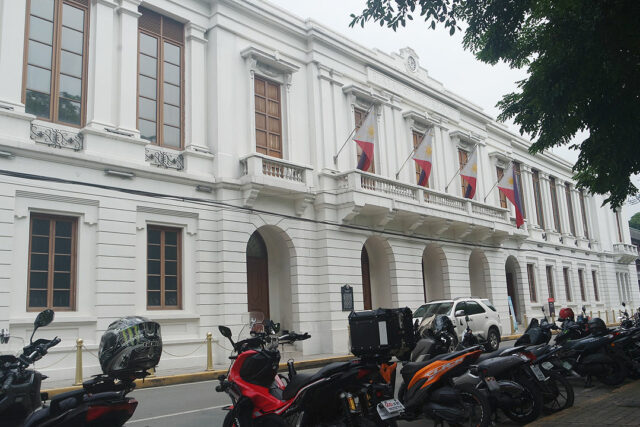Aliwan Fiesta raises the bar for Philippine festivals
ALIWAN Fiesta, an event that showcases festive traditions from all over the Philippines, is returning to the streets of Pasay City from June 27 to 29, amid the alternating summer heat and sudden rains.
The annual competition is known for bringing together champions from major dance and pageantry circuits in various regions’ festivals, such as the Dinagyang from Iloilo, the Sinulog from Cebu, and Panagbenga from Baguio.
This year, it kicks off with a first-time event, with homegrown musicians from the various dance contingents vying to win the festival song competition.
“We brought back this component because, aside from the streetdance, we realized the musicians of the contingents play a very important role. We are showcasing the musicians by holding a separate competition on day one, called ‘Tugog ng Aliwan’,” said Ruperto S. Nicdao, president of the MBC Media Group at a June 24 press conference at the Aliw Theater in Pasay City.
“Over the years, we’ve found that the contingents have improved their performances. The existence of this national competition has pushed them to do better, to showcase more artistic choreography,” he added.
The event was conceived in 2003 by the MBC Media Group (then the Manila Broadcasting Company), in cooperation with the Cultural Center of the Philippines (CCP) and the cities of Manila and Pasay.
It brings together the winning performance groups from the multitude of fiestas held throughout the country. The parades held during Aliwan Fiesta are competitions that yield a large cash prize for the winners.
Last year, the parade route was limited to the CCP Complex due to road repairs along Roxas Blvd. in the City of Manila. This year, it will be the same.
“We have to do this so that we don’t add to the city’s traffic problem. Hopefully, next year we can go back to the original parade route, all the way from Quirino Grandstand to here. Many are clamoring for this because that venue and that route can accommodate larger crowds,” said Mr. Nicdao.
Aside from the street dancing parades, there are flea markets featuring products from the different regions, and entertainment care of local musicians. The Pasakalye Concert on June 27, 7 p.m., will feature a star-studded lineup of artists including Dilaw, Ryssi Avila, Arthur Miguel, Yes My Love, and Auxbeat.
There is also a beauty pageant, called Reyna ng Aliwan, on June 28, and a competition in float design joining the streetdance festivities for the Grand Parade on June 29.
Eric Zerrudo, the executive director of the National Commission for Culture and the Arts, told the press that the Aliwan Fiesta has “set a strong standard.”
“They have increased in number and in fervor to study, improve, and train. We’ve noticed that they really look into choreography, narrative, music, lights, and props. There is a strong consciousness now of how festivals make up a huge part of the Filipino culture,” he said.
More information on the parade route and schedule of the competitions and performances can be found on Aliwan Fiesta’s Facebook page. — Brontë H. Lacsamana













